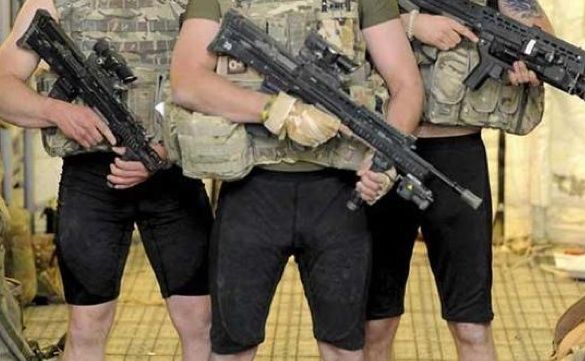Marines' Ballistic Underwear Must Also Be Comfy

Kevlar underwear can protect U.S. Marines against blast fragments flying like bullets through the air, but it lacks the comfort of simple cotton undies or silky unmentionables. Now the U.S. military has begun searching for better alternatives that prevent chafing as well as battle wounds.
The U.S. Marine Corps sees comfortable undergarments as being equally important to ballistic protection, according to a new request for information aimed at U.S. manufacturers. That means any new underwear fabric must not only shield private parts against burns and tiny fragments traveling at 650 feet per second — the speed of some bullets — but also feel soft against the skin and have the breathability to dry out quickly.
"In particular, we are looking for better breathability, flexibility and comfort while ensuring our Marines maintain the level of protection stated in our requirement," said Barbara Hamby, a public affairs representative for the Marine Corps Systems Command.
Wounds in such sensitive areas can lead to rapid blood loss or infections among U.S. Marine and Army forces in Afghanistan and Iraq, according to a previous Army contract for ballistic underwear. It added, "Without ballistic undergarments, I MEF (Marine Expeditionary Force) and 10th Mountain forces will continue to suffer significant injuries, loss of life, resulting in an adverse effect on combat operations."

U.S. Marines have previously used 75,000 protective undergarments manufactured by a British company for British soldiers. The Marine Corps Systems Command also requested 144,000 undergarments made by U.S. supplier Armorworks in late June 2011, so that U.S. Marines began receiving them in December.
"The protective material in these protective undergarments is a Simplex Weave Kevlar fabric," Hamby told InnovationNewsDaily. "It provides excellent protection from sand and gravel debris from improvised explosive devices."
Silk fabric or synthetic fiber such as Twaron may prove more comfortable than the Simplex Weave Kevlar, Hamby said. The Marine Corps has identified several U.S. fabric manufacturers who might create ballistic underwear using such materials.
Sign up for the Live Science daily newsletter now
Get the world’s most fascinating discoveries delivered straight to your inbox.
Any manufacturer that does take up the challenge must also meet strict guidelines for hygiene and laundry — the underwear should be able to dry out "in less than 4 hours" and resist microbes with "95 percent bacteria reduction after 25 home laundering cycles."
You can follow InnovationNewsDaily Senior Writer Jeremy Hsu on Twitter @ScienceHsu. Follow InnovationNewsDaily on Twitter @News_Innovation, or on Facebook.











